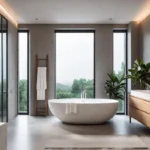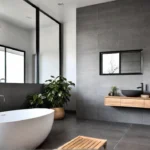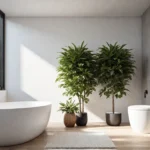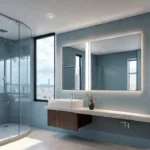Do you ever look around your bathroom and feel like it’s just… lacking? Like it’s not living up to its full potential as a serene, rejuvenating space? Trust me, I’ve been there. As a busy marketing manager living in a small city apartment, I know how challenging it can be to create an oasis of calm amidst the chaos.
But what if I told you that you could transform your bathroom into a sustainable sanctuary with a few eco-friendly tweaks? I’m talking about a space that’s visually stunning and kinder to the planet. Imagine stepping into a bathroom that’s better for the environment and better for your well-being. Sounds pretty great, right?
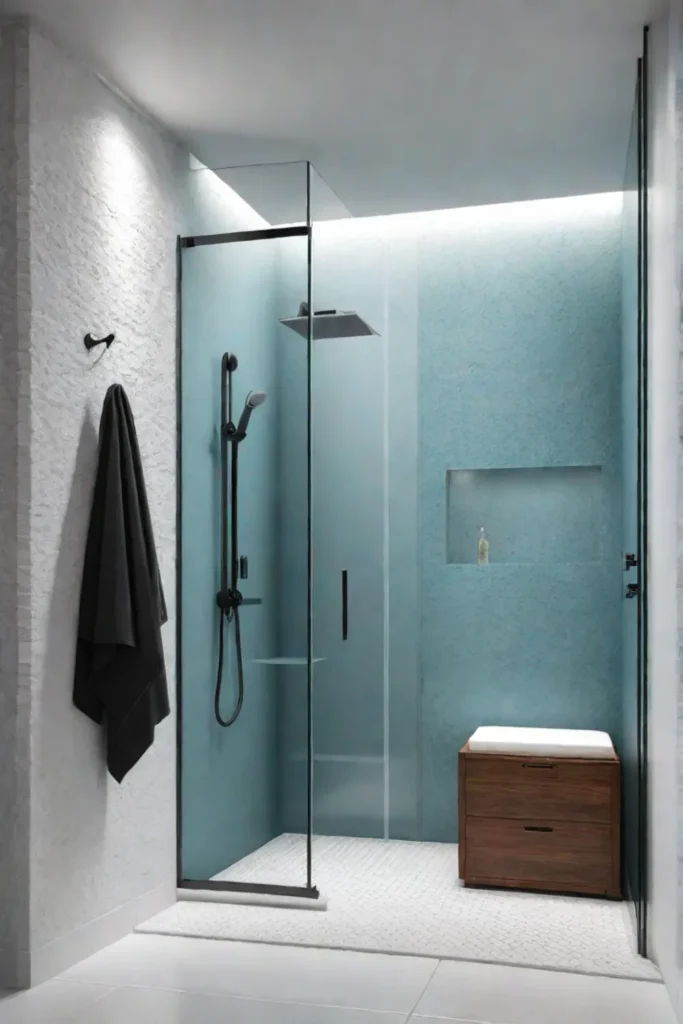
In this article, we’ll explore a variety of eco-friendly bathroom design ideas that will help you create your own personal oasis. From water-saving fixtures to energy-efficient lighting, sustainable materials, and even biophilic touches, I’ll share practical tips and inspiring examples to make your bathroom dreams a reality. So get ready to say goodbye to that drab, uninspired space and hello to a Sustainable Sanctuary!
Water-Saving Fixtures
Let’s start with one of the most crucial aspects of sustainable bathroom design: water conservation. As an only child who grew up in the suburbs, I felt deeply connected to nature. So when I moved to the city and saw how much water my little apartment was using, I knew I had to make some changes.
The average American household uses around 300 gallons of water daily, with a significant portion going straight down the drain in the bathroom. However, upgrading to water-efficient fixtures can dramatically reduce water consumption without sacrificing comfort or performance.
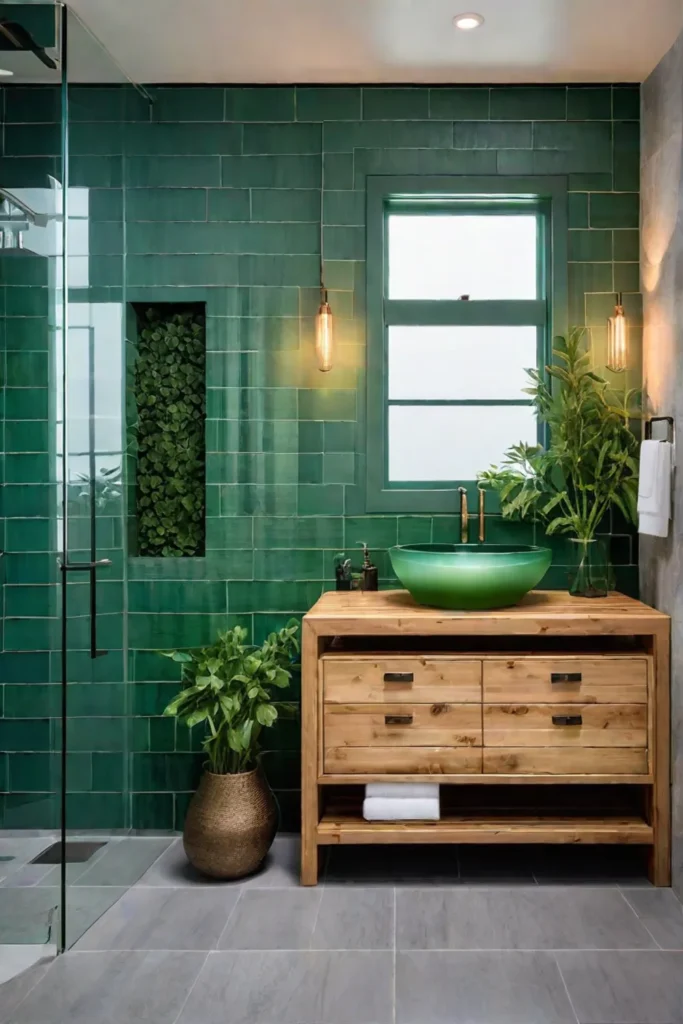
Take low-flow showerheads, for example. These nifty little gadgets use up to 5 gallons per minute, compared to the standard 5 gallons per minute. That’s a 50% reduction in water usage! Dual-flush toilets take the water-saving game to the next level, allowing you to choose between a full flush for solid waste and a lighter flush for liquid waste. Some models can save up to 67% of water compared to traditional toilets.
But it doesn’t stop there. You can also explore greywater systems, which reuse water from sinks and showers for toilet flushing or landscape irrigation, and even set up a rainwater harvesting system to collect water for non-potable uses. These strategies can make a huge difference in your overall water consumption.
Energy-Efficient Lighting
Lighting is another crucial element of sustainable bathroom design, and I’ve had a lot of fun experimenting with it. As a self-proclaimed lighting fan, I’ve discovered that simple swaps can have a big impact.
Did you know that LED bulbs use up to 80% less energy than traditional incandescent bulbs? And they last 25 times longer! That’s a win-win in my book. By incorporating LED fixtures throughout your bathroom – from vanity lights to recessed cans and task lighting – you can significantly reduce energy usage and save money on utility bills.
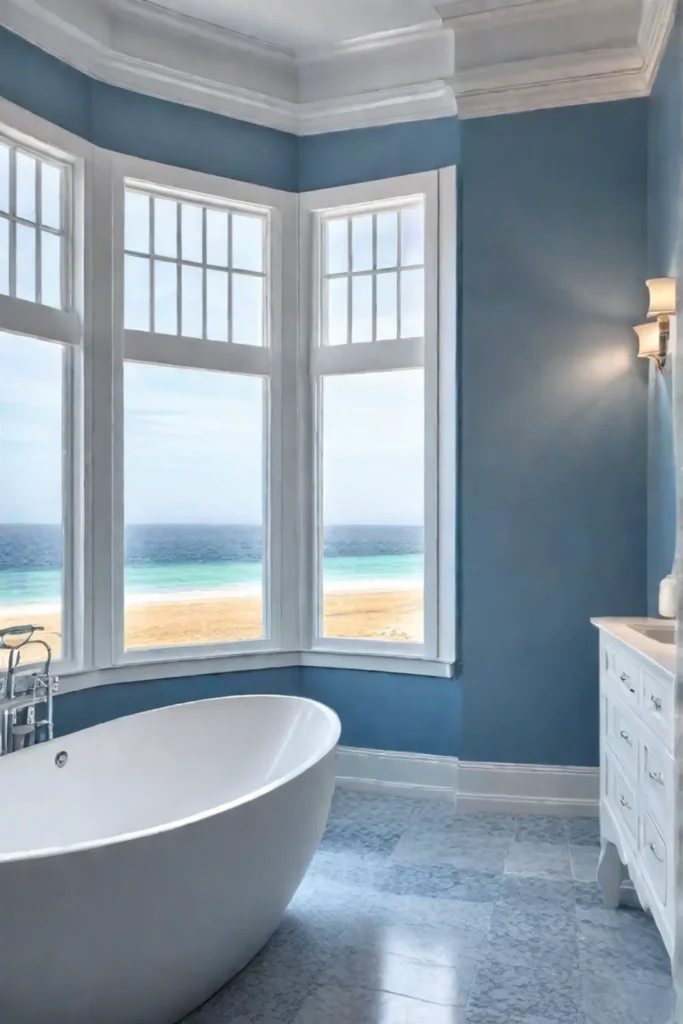
But it’s not just about the bulbs. Maximizing natural light is also key to creating an energy-efficient bathroom. Strategic window placement and the use of light-reflecting surfaces can help you harness the power of the sun and cut down on your reliance on artificial lighting. To ensure the lights are only on when you need them, consider installing motion-activated sensors so the room is illuminated only when in use.
Recycled and Sustainable Materials
When it comes to sustainable bathroom design, the materials you choose can greatly impact the environment. As someone who loves good thrift store finds, I always seek unique, eco-friendly materials that give new life to discarded items.
One of my favorite sustainable bathroom materials is recycled glass tiles. These tiles are made from post-consumer waste, which means they’re not only beautiful and one-of-a-kind, but they’re also helping to reduce the amount of glass that ends up in landfills. And the best part? They’re just as durable and easy to maintain as traditional tile options.
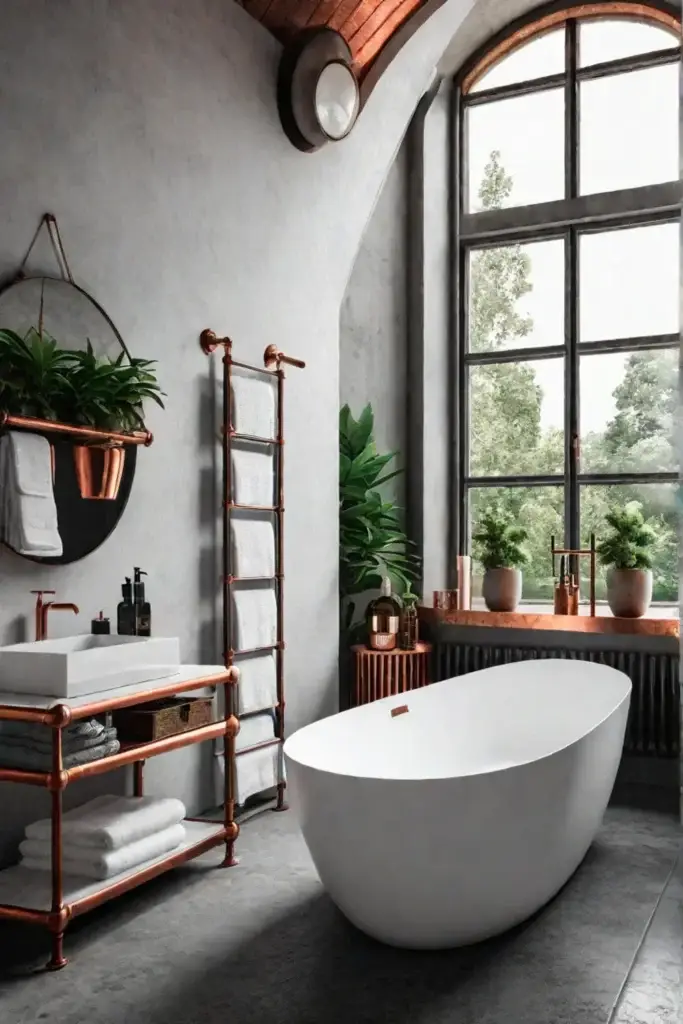
Another sustainable material that’s near and dear to my heart is bamboo. As a rapidly renewable resource, bamboo is an excellent choice for bathroom cabinetry, shelving, and flooring. It’s naturally water-resistant and can add a warm, organic touch to your space.
And let’s not forget about reclaimed wood. By using discarded or repurposed timber for vanities, shelves, and other bathroom accents, you can create a unique, rustic-chic look while giving new life to old materials. It’s a win-win for the environment and your design aesthetic.
Low-VOC Paints and Finishes
When it comes to creating a sustainable bathroom, it’s not just about the big-ticket items like fixtures and materials. The paints and finishes you choose can also significantly impact the overall eco-friendliness of your space.
Many traditional paints and finishes contain high levels of volatile organic compounds (VOCs), which can off-gas for years and contribute to poor indoor air quality. But you can create a healthier, more sustainable bathroom environment by opting for low-VOC options.
Water-based latex paints are a great low-VOC choice that provides a durable, washable finish that is perfect for bathrooms. To get creative, consider soy-based or milk paints made from natural, renewable ingredients.

But it’s not just about the paint – your sealants and stains can also make a difference. Look for natural, plant-based options like linseed oil or beeswax to protect your surfaces without exposing yourself to harmful chemicals.
By choosing low-VOC paints and finishes, you’ll not only be reducing your environmental impact, but you’ll also be creating a healthier, more breathable space for you and your family to enjoy.
Integrating Greenery
As someone who loves bringing the outdoors in, I’m a big believer in the power of plants to transform a space. And when it comes to sustainable bathroom design, integrating greenery is a must.
Studies have shown that the presence of plants in indoor environments can improve air quality, reduce stress, and even boost creativity and productivity. And the bathroom is the perfect place to reap these benefits, thanks to the naturally humid conditions.
Some of the best bathroom plant species include snake plants, English ivy, and peace lilies. These air-purifying powerhouses thrive in moist environments and can help filter out toxins and improve the overall air quality in your space.
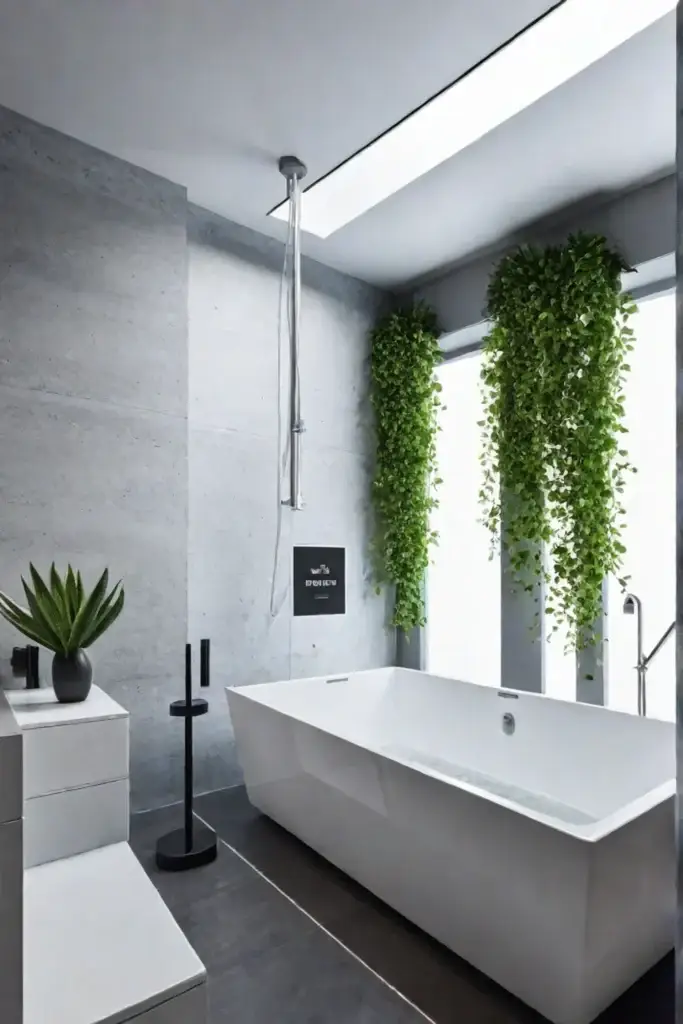
But it’s not just about potted plants – you can get creative with vertical gardens or living walls. These systems allow you to grow herbs, succulents, or other small plants inside the bathroom, adding a lush, nature-inspired element to your sustainable sanctuary.
To really emphasize the biophilic connection, consider incorporating natural materials like stone, wood, or bamboo into your bathroom design. These organic elements can help bridge the gap between the built environment and the natural world, creating a serene and rejuvenating space.
Sustainable Flooring and Countertops
When it comes to sustainable bathroom design, the flooring and countertops you choose can make a big difference in the overall environmental impact of your space. As someone who loves a good DIY project, I’ve had a lot of fun exploring the world of eco-friendly surface materials.
One of my favorite sustainable flooring options is bamboo. As a rapidly renewable resource, bamboo is an excellent choice for bathrooms, thanks to its natural water resistance and durability. And the best part? It comes in various styles and finishes to suit any design aesthetic.
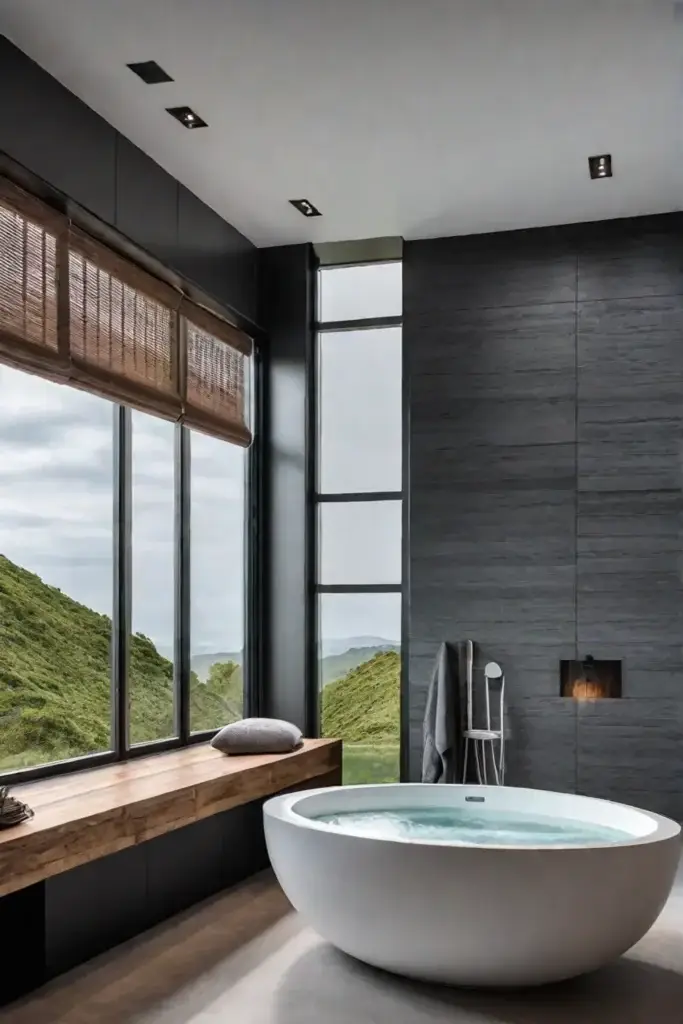
Consider recycled tile if you’re looking for something a little more unique. These tiles are made from post-consumer waste, like discarded glass or ceramic, and they offer a one-of-a-kind look that’s both beautiful and environmentally friendly.
When it comes to countertops, quartz is a great sustainable option. Not only is it incredibly durable and low-maintenance, but it can also be made from recycled materials, reducing the environmental impact of your bathroom makeover. And if you want to get creative, you can explore recycled glass countertops, which offer a stunning, eco-friendly alternative to traditional stone.
By carefully selecting sustainable flooring and countertop materials, you can create a bathroom that’s visually stunning and kind to the planet.
Maximizing Natural Ventilation
Last, let’s discuss the importance of proper ventilation in a sustainable bathroom. As someone who’s always been conscious of indoor air quality, I know how crucial it is to have a well-ventilated space, especially in a room as humid as the bathroom.
Inadequate ventilation can lead to the buildup of moisture, mold, and mildew, hurting your health and the overall environment. But by incorporating natural ventilation strategies into your bathroom design, you can create a healthier, more sustainable space.

Start by including operable windows or skylights that allow for cross-ventilation. This helps to circulate fresh air and reduce the need for energy-intensive mechanical ventilation. You can also explore passive ventilation systems, like solar-powered exhaust fans, that operate without electricity.
Also, remember proper sealing and insulation. By making sure your bathroom is well-sealed and insulated, you can minimize moisture buildup and reduce the energy required to maintain a comfortable temperature—a win-win for both the environment and your utility bills.
Conclusion
As you can see, designing a sustainable bathroom is all about taking a holistic approach and considering how you can reduce your environmental impact while creating a serene, rejuvenating space. From water-saving fixtures and energy-efficient lighting to sustainable materials and natural ventilation, there are many ways to transform your bathroom into a Sustainable Sanctuary.
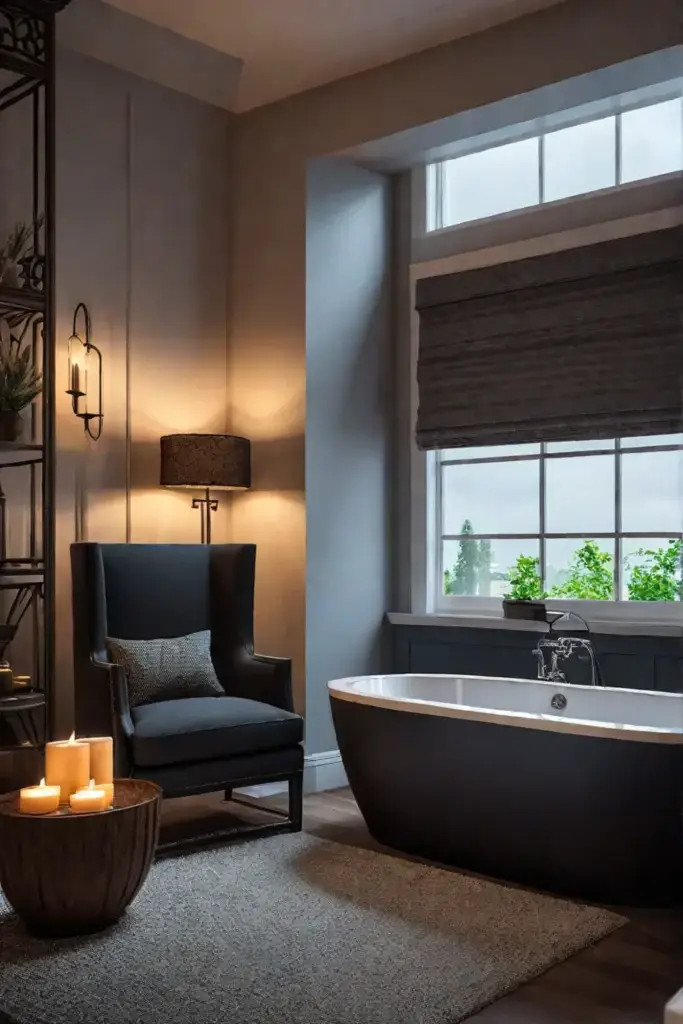
And the best part? To make it happen, you don’t have to be an eco-warrior or a design maven. By incorporating even a few of these eco-friendly strategies, you can create a bathroom that’s not only beautiful but also better for the planet. So what are you waiting for? Let’s get started on your sustainable bathroom transformation!

